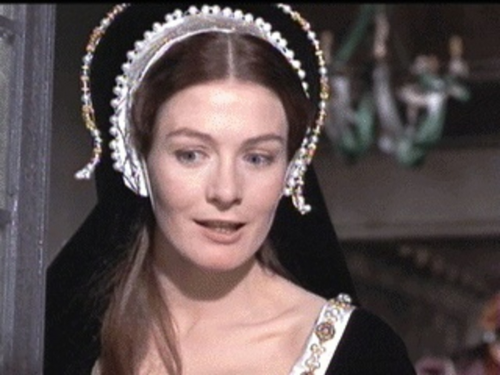Next time you are on a blind date and you get that moment of awkward
silence, don’t tell her how nice she is, that will probably be a lie. Instead
you can confidently announce that Vanessa Redgrave (an actress) and
Boris Spassky were born on the exact same day. The 30th January 1937.
This is Vanessa in her 1971 role as Mary Queen of Scots.

This is Spassky in his 1972 role as Fischer’s opponent.

Now you have her undivided attention you can show her this.

The cover of Chess Review January 1937.
Do not try to solve the mate in 3. It’s too difficult, it will destroy
the blissful magic moment of romance that you have just created.
Point to the index on the front page of the magazine. By now you should
have shifted yourself from your side of the table and be sitting next to her.

And together you can read Barrie F. Winkleman’s piece about the up and
coming 1937 World Championship Match between Alekhine and Euwe.
Winkleman is of the opinion that Euwe beating Alekhine in 1935 was more
of a shock to the chess world than Alekhine defeating Capablanca in 1927.
You can discuss the merits of this statement and if by chance she is still there
you then whip out your pocket chess set (always remember to take one with you)
and play over a game given by Don MacMurray in his ‘Knack of Chess’ Article.
MacMurray says that you can never win a game unless your opponent blunders.
“With this in mind, you can set yourself
to the study of the only really effective
techniques available to the amateur player.
(that’s us) The method of inducing your
opponent to err, which constitutes the
knack of successful chess-playing.”
He follows up this piece of advice by showing a few opening traps.
You can now round off a perfect evening by going back to your flat
logging onto RHP and seeing how many players have fallen for them.
Tyrone Sylvester - Olympos RHP 2015
41 other RHP players have walked into this well know trick/trap/blunder.
Next we look at an RHP player playing White making what looks an insignificant
mistake in this line. A warning that one careless move can throw away a book win.
Mimmo - JimmyBilly RHP 2009
Finally we end the Blind Date by looking at a game that Greco, sitting all alone
in his monastery in the 1620’s playing himself and making up games predicted.
meman - Glenton RHP 2005 (and Greco circa 1620)

Staying with the 1937 Chess Review (By the way Alekhine won the 1937 match .)
This Helpmate caught my eye. Black to play and help White to mate in two moves.
Dr. P. G. Keeney, Chess Review 1937
Remember Black is playing down the board. Helpmate in 2.
Give it a shot. It’s sound. there is a Helpmate in two there.


Apparently, though there was not much over the board evidence,
Karjakin spent quite a lot of time on opening analysis cooking up
novelties for his 2016 World Championship with Magnus Carlsen.
What usually happens after such a well prepared match both
players dump their TN’s (theoretical novelties) in later games.
I am reminded of Spassky in 1973 getting a chance to show off
what he and his team had prepared for Fischer’s King’s Indian.
Raymond Keene was brave enough to venture forth with a King’s
Indian after the ’72 match. Fischer wisely refrained from playing it
in the match. Poor Raymond Keene was picked off in 23 moves
At the 2017 Tata Steel event Karjakin played a harmless looking
6.a3 in the Najdorf against Anish Giri (a draw). It was possibly
a line he and his team had looked at should Carlsen go Najdorf.
Carlsen was looking at the Karjakin game and in the next round
he played Karjakin’s 6.a3 idea against Radoslaw Wojtaszek and
played what he considered a later improvement and Carlsen won
I’m not going to go into depth about the opening 6.a3 idea. It’s
nothing startling. It’s just different. What we are going to do is
recall the 1937 words above from Don MacMurray about
inducing your opponent to make an error. I am adding.....
“The knack of chess is not inducing the error, it is spotting the error.”
This position arose in the Carlsen - Wojtaszek game. (White to play)
Black has just played 30. Qf6-c6 thinking Carlsen cannot take
the e-pawn due to the exchange winning skewer 31.Qxe5 Bd6.
This was an unforced instructive error by Wojtaszek.
If your opponent sets you a trap, don’t believe him right
away. Look to see what happens should you fall for it.

Already we have 2017 games to add to the Hall of Doom.
First on the tour we see a player walking into a mate in one.
sardodos - jb70 RHP 2017
Next we see the Black player clutching at straws going for a
stalemate. White obliges missing a mate in one on the way..
reboot - Pat10 RHP 2017
Finally a complete disaster. White captures a Rook when there was a mate in two..
OK. White is still winning but here at RHP having a won game is recipe for doom.
Mctayto - danrose84 RHP 2017

The solution to the Helpmate in Two.
What is good about composing that problem is the White King must be on a3.
If it was b3 then there would be a dual solution. Black could take a Rook or a
Bishop on move one and the mate would still work But with Ka3 there no dual.
If you have anything to say or add then please use Thread 171520

